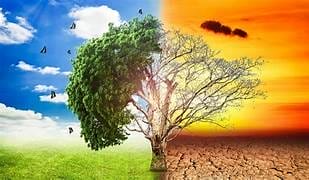Climate Change and How to Help: A Global Responsibility
February 7, 2025 2025-01-31 10:32
Climate Change and How to Help: A Global Responsibility
Climate change is one of the most pressing challenges of our time, affecting ecosystems, weather patterns, and human livelihoods worldwide. It is caused primarily by human activities, including the burning of fossil fuels, deforestation, and industrial emissions, leading to rising global temperatures, extreme weather events, and environmental degradation. While the consequences of climate change are severe, there are many actions individuals, communities, and governments can take to help mitigate its effects and work toward a more sustainable future.
Understanding Climate Change
Climate change refers to long-term shifts in temperature, precipitation, and other atmospheric conditions on Earth. While natural processes such as volcanic eruptions and solar variations can influence climate patterns, human activities have significantly accelerated the rate of change. The main driver of modern climate change is the excessive release of greenhouse gases (GHGs), such as carbon dioxide (CO₂), methane (CH₄), and nitrous oxide (N₂O), which trap heat in the Earth’s atmosphere and lead to global warming.
Major Causes of Climate Change
- Burning Fossil Fuels
- Coal, oil, and natural gas are burned for electricity, transportation, and industrial production, releasing large amounts of CO₂.
- Energy production alone contributes to over 70% of global greenhouse gas emissions.
- Deforestation
- Forests act as carbon sinks, absorbing CO₂ from the atmosphere.
- Large-scale deforestation, especially in tropical regions like the Amazon, reduces the planet’s ability to regulate CO₂ levels.
- Agriculture and Livestock
- Industrial farming and livestock production release methane and nitrous oxide, two potent greenhouse gases.
- Excessive fertilizer use leads to soil degradation and increased emissions.
- Waste and Pollution
- Landfills produce methane as organic waste decomposes.
- Plastic pollution contributes to environmental degradation and disrupts ecosystems.
- Industrial and Transportation Emissions
- Factories and vehicles emit pollutants that contribute to poor air quality and climate warming.
- Unsustainable manufacturing and excessive consumerism increase the demand for energy and raw materials.
Effects of Climate Change
Climate change has far-reaching consequences that impact both the environment and human societies:
- Rising Global Temperatures: The Earth’s average temperature has increased by more than 1°C since the pre-industrial era, leading to heatwaves, wildfires, and droughts.
- Extreme Weather Events: Hurricanes, typhoons, floods, and storms are becoming more frequent and intense.
- Sea Level Rise: Melting ice caps and glaciers cause rising sea levels, threatening coastal communities.
- Loss of Biodiversity: Many species face extinction due to changing habitats and disrupted ecosystems.
- Health Risks: Air pollution, heatwaves, and food insecurity contribute to increased health problems such as respiratory diseases and malnutrition.
How to Help Combat Climate Change
While climate change is a global issue, individuals, businesses, and governments can all take action to reduce its impact.
Individual Actions
- Reduce Carbon Footprint
- Use public transportation, carpool, walk, or cycle whenever possible.
- Switch to energy-efficient appliances and LED light bulbs.
- Reduce energy consumption by unplugging devices when not in use.
- Adopt Sustainable Eating Habits
- Eat more plant-based foods and reduce meat consumption to lower methane emissions.
- Support local and organic farmers to minimize transportation-related emissions.
- Reduce food waste by planning meals and composting leftovers.
- Conserve Water and Energy
- Take shorter showers and fix leaks to conserve water.
- Use renewable energy sources like solar or wind power when possible.
- Turn off lights and electronics when not in use.
- Reduce, Reuse, Recycle
- Avoid single-use plastics and opt for reusable products.
- Recycle paper, glass, plastic, and electronic waste properly.
- Upcycle old items instead of throwing them away.
- Support Reforestation and Green Initiatives
- Plant trees to help absorb carbon dioxide.
- Support conservation projects that protect forests and wetlands.
- Participate in clean-up drives in local communities.
Community and Business Actions
- Encourage Green Policies
- Advocate for environmentally friendly policies in local and national governments.
- Support businesses that implement sustainable practices.
- Promote Renewable Energy Use
- Invest in solar panels, wind energy, or hydroelectric power.
- Encourage local governments and businesses to transition to clean energy.
- Educate and Raise Awareness
- Host workshops and educational events on climate change and sustainability.
- Use social media to spread awareness and encourage action.
- Implement Sustainable Work Practices
- Encourage remote work to reduce commuting emissions.
- Use eco-friendly materials in workplaces.
- Set sustainability goals for businesses and track progress.
Government and Policy Actions
- Enforce Climate Regulations
- Implement carbon taxes or cap-and-trade policies to limit emissions.
- Strengthen environmental protection laws to prevent deforestation and pollution.
- Invest in Renewable Energy and Infrastructure
- Provide incentives for businesses and homeowners to adopt solar and wind energy.
- Expand public transportation networks to reduce reliance on cars.
- Support Sustainable Agriculture
- Promote organic and regenerative farming practices.
- Reduce subsidies for high-emission industries and invest in green technologies.
- Join International Climate Agreements
- Commit to global climate goals such as the Paris Agreement.
- Collaborate with other nations to develop climate adaptation and mitigation strategies.
The Future of Climate Action
As climate change accelerates, global efforts to mitigate its effects must also increase. Innovations in clean energy, sustainable urban planning, and reforestation projects offer hope for a more sustainable future. With governments, businesses, and individuals working together, it is possible to slow climate change and build a resilient planet for future generations.
Conclusion
Climate change is a critical issue that requires immediate action at all levels—individual, community, corporate, and governmental. While the challenge is immense, everyone has a role to play in reducing carbon emissions, conserving resources, and promoting sustainability. By making conscious choices today, we can protect the planet for future generations and ensure a healthier, more sustainable world.
Related Posts
Climate Change and How to Help: A Global Responsibility
February 7, 2025 2025-01-31 10:32Popular Tags






























